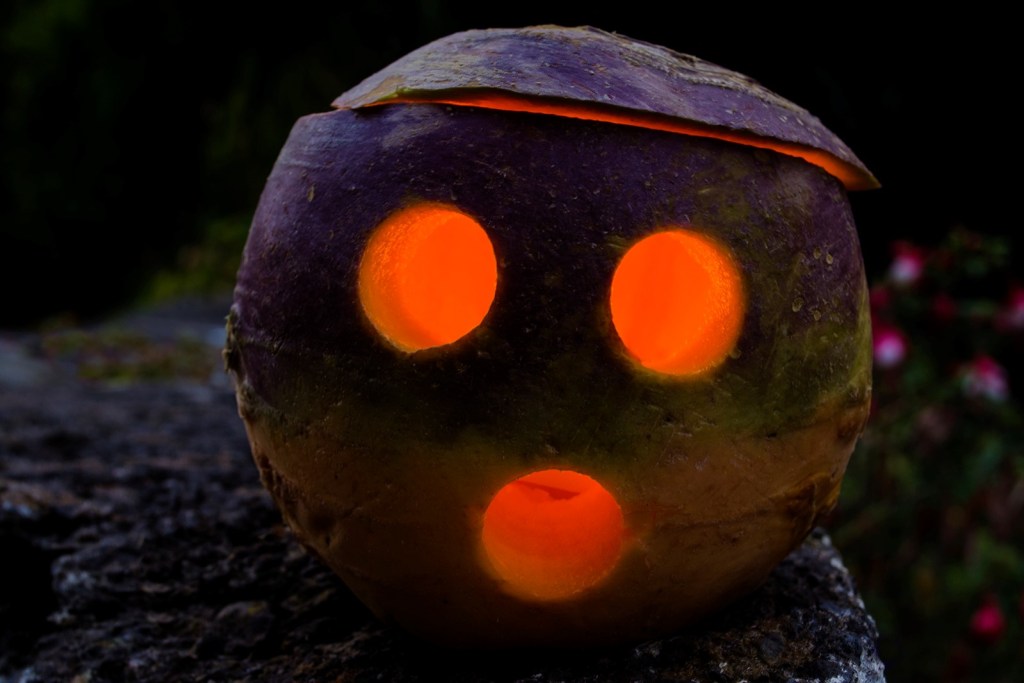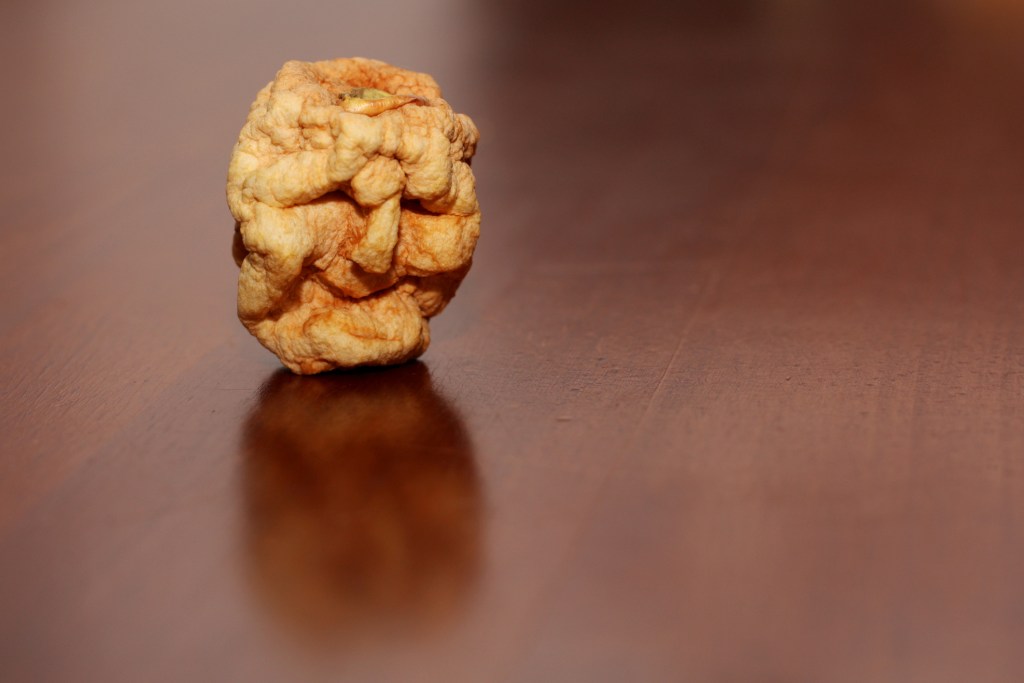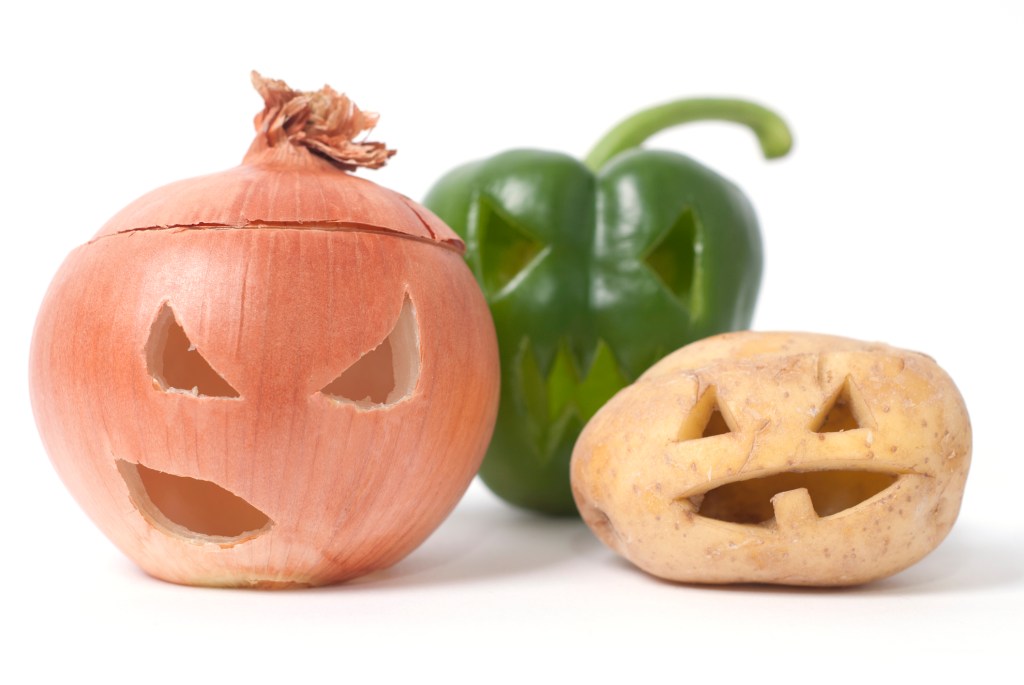Carving jack-o-lanterns is a long standing Halloween tradition for many families. They’re a classic symbol of the season, typically taking the form of a bright orange pumpkin with triangle eyes and a jagged mouth. You can spice up your Halloween display by carving increasingly intricate or scary designs, but if you want to take it a step further, you should consider carving something other than a pumpkin. Not sure where to start? We’ve got seven great options for you to choose from!
Watermelons
Watermelons are a great place to start, as they have several things in common with pumpkins that make them fairly easy to carve. They have a thick, smooth rind with soft flesh, so you don’t need special tools to hollow them out or carve them. Additionally, watermelons are larger than many other fruits, so you have plenty of room to work. However, there are a couple things to be aware of.
Firstly, watermelons tend to have rounded ends, so be sure to flatten off the end yours will be resting on, to keep it from rolling away. The other thing to be aware of is that carved watermelons don’t last long, only about a week on average. However, keeping your watermelon cool can extend its shelf life.
Turnips
Turnips may not be the first vegetable you think of when listing things to carve, but there’s a surprising history you may not be aware of. Turnips were among the first vegetables to be carved into jack-o-lanterns, due to how readily available they were in Ireland, where the tradition began.
The unique shapes and textures of turnips can create some really interesting designs, and the firmness of the flesh adds structural integrity. However, turnips are quite a bit smaller than pumpkins, so you’ll need smaller tools. Turnips also don’t last long outdoors, only around three to five days. Their small size means they take less time to carve as well, so they’re easy to replace.

Apples
Apples are a bit different from some of the other plants on this list, since they’re much more difficult to hollow out due to their thin peels and softer flesh. However, they are a great choice for sculpting, especially if you choose a large, firm variety like a honeycrisp. It’s true that apples don’t have a long shelf life, especially if you’re displaying them outdoors. However, once they’ve been carved you can dry them, which helps preserve them. The drying process also makes them shrink and become more wrinkled, which can add to the grotesqueness of the carving.

Butternut squash
Butternut squash are an excellent choice for carving if you’re looking for something simple and classy. They have a similar consistency to pumpkins, both in their thicker outer layer and goopy insides. Butternut squash have a shelf life similar to a standard jack-o-lantern, too. A key way they differ, though, is in shape. Butternut squash are more oblong than pumpkins, and their pale coloration means your carvings are easier to accent with paint.
Potatoes
Potatoes are great for carving for a few different reasons. The starchiness of potatoes means that they hold up well for sculpting, although they can be a little tricky to hollow out. They’re readily available regardless of season or location in most cases. The dry, starchy texture of potatoes helps them last longer than other fruits and vegetables. Potatoes are also typically gotten in bulk, which removes a lot of the pressure of making a good jack-o-lantern. If you get a five pound bag of potatoes from your local grocery store, you’ll have plenty of potatoes to experiment with or to use as backups if one carving doesn’t go well.

Bell peppers
Bell peppers are a fun way to add a splash of color to your Halloween display without using paints or markers. They’re small and relatively fragile (when compared to heartier vegetables like pumpkins and butternut squash), which can make them slightly more difficult to carve in general and significantly more difficult to carve intricate designs into. In general, you should opt for a smaller blade, like a pocket knife or precision knife, for carving bell peppers. Bell peppers don’t last long, especially in hotter climates, but they do have the added benefit of already being mostly hollow.
Beets
Beets are similar to turnips in size and texture, making them excellent for sculpting. With careful, steady hands you can even hollow them out for that classic jack-o-lantern lighting. The one notable difference between carving a turnip and carving a beet is the color. Beets are a deep reddish purple color that lends itself well to the spookier aspects of Halloween. Carved beets can last a few days to a week, depending on the weather. Consider storing them in the fridge until you’re ready to display them.
Adding these seven fruits and vegetables to your Halloween display can help your home really stand out. Whether you prefer to carve ghoulish monsters, beautiful designs, or cute little faces, there are pumpkin alternatives to fit your needs. Now you’re ready to create the Halloween display of your dreams, without limiting yourself to just pumpkins.
Editors' Recommendations
- Do you live in climate zone 2? Here’s what you need to know
- The best vegetables to plant in November
- 7 ways to reuse your Halloween pumpkin so it doesn’t go to waste
- What’s in season at the farmers market this fall
- When do pears come in season? What you need to know




